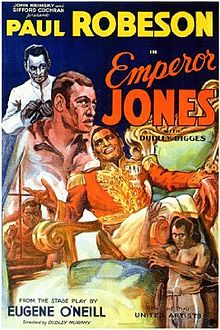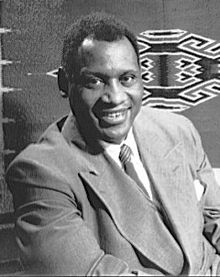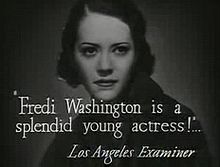The Emperor Jones (1933 film)
The Emperor Jones is a 1933 American PreCode film adaptation of the Eugene ONeill play of the same title, was made outside of the Hollywood studio system, financed with private money from neophyte wealthy producers, and directed by iconoclast Dudley Murphy, who had sought ONeills permission to film the play since its 1924 production in New York. He cast Paul Robeson in his first film role, Dudley Digges, Frank H. Wilson, and Fredi Washington. The screenplay was written by DuBose Heyward and filmed at Kaufman Astoria Studios with the beach scene shot at Jones beach Long Beach, New York. Robeson starred in the ONeill play on stage, both in the United States and England, a role that had helped launch his career.
In the film version, the opening shots are of an African ritual dance. Some critics are quick to assess the opening as representative of the primitive black world to which Brutus Jones will eventually revert. However, more scholarly reviews of the film understand the complexities of the allusion to and comparison between the roots of the AfricanAmerican church and the rhythmic chanting often seen in African religious practices. As discussed further, below, its director, Dudley Nichols, had codirected Ballet Mecanique and other musicallybased experimental films. Having just spent several years in Hollywood, he now craved the freedom to use musical forms as way of translating ONeills experimentation on stage into a film form. Pal Robeson was already a musical star, and would go on to study traditional African music and dance while on location in NIgeria and with scholars in London.A quick dissolve takes us into a Baptist church in the American South, where the dancing of the congregation presents an image that argues for a continuity between the savage Africans and the ringshout Baptists. Such suggestive editing may be the kind of element that causes viewers to suspect the film of racism. ........
Source: Wikipedia




